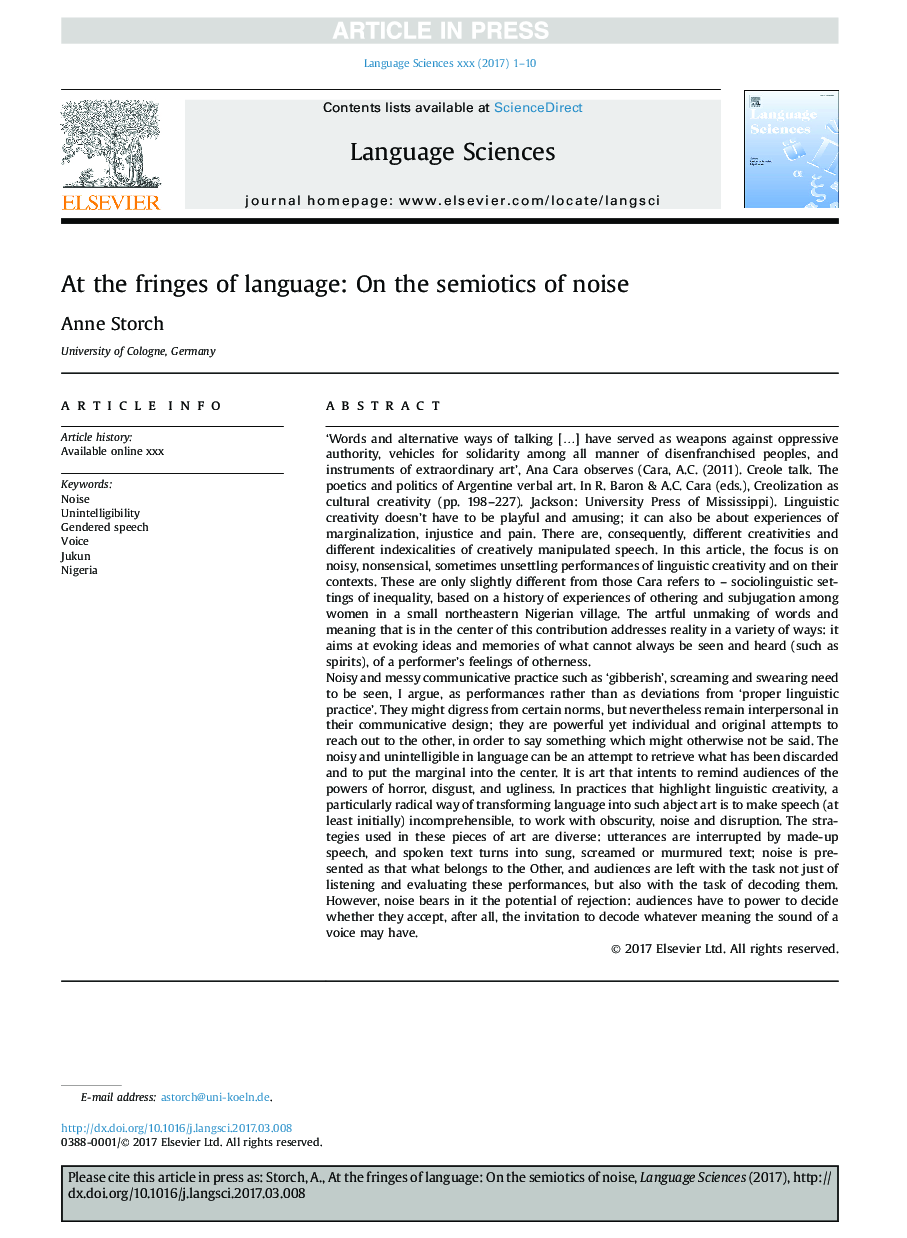| Article ID | Journal | Published Year | Pages | File Type |
|---|---|---|---|---|
| 7533842 | Language Sciences | 2018 | 10 Pages |
Abstract
Noisy and messy communicative practice such as 'gibberish', screaming and swearing need to be seen, I argue, as performances rather than as deviations from 'proper linguistic practice'. They might digress from certain norms, but nevertheless remain interpersonal in their communicative design; they are powerful yet individual and original attempts to reach out to the other, in order to say something which might otherwise not be said. The noisy and unintelligible in language can be an attempt to retrieve what has been discarded and to put the marginal into the center. It is art that intents to remind audiences of the powers of horror, disgust, and ugliness. In practices that highlight linguistic creativity, a particularly radical way of transforming language into such abject art is to make speech (at least initially) incomprehensible, to work with obscurity, noise and disruption. The strategies used in these pieces of art are diverse: utterances are interrupted by made-up speech, and spoken text turns into sung, screamed or murmured text; noise is presented as that what belongs to the Other, and audiences are left with the task not just of listening and evaluating these performances, but also with the task of decoding them. However, noise bears in it the potential of rejection: audiences have to power to decide whether they accept, after all, the invitation to decode whatever meaning the sound of a voice may have.
Related Topics
Social Sciences and Humanities
Arts and Humanities
Language and Linguistics
Authors
Anne Storch,
